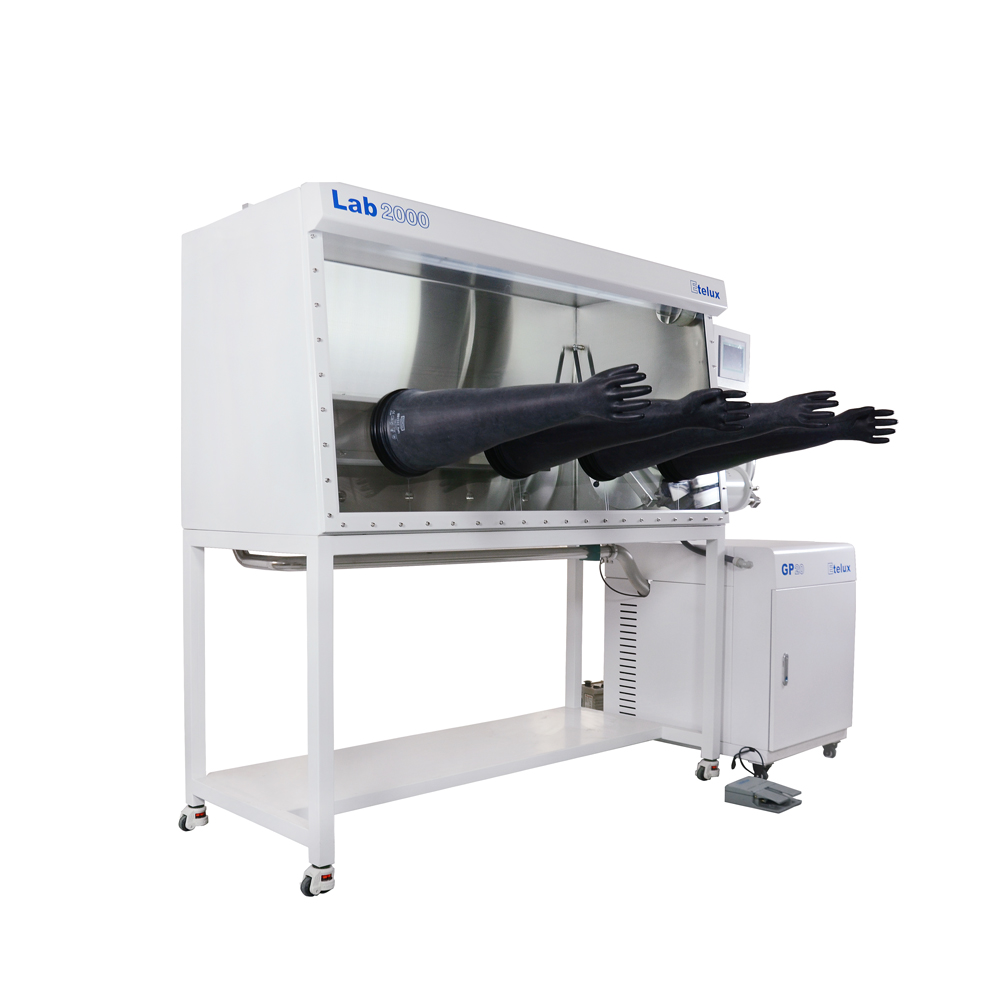The oxygen detects on the market mainly use two technologies, namely electrochemical fuel cells and zirconia sensor technologies. The working principle of these two technologies is very different. The following introductions can be concluded that the electrochemical fuel cell technology is more suitable for the micro oxygen in the test glove box.
1) Electrochemical fuel cell technology:
The working principle of the electrochemical fuel cell is to be used as a positive electrode and metal lead as a negative electrode, and the electrolyte is potassium hydroxide. Electrolyte and metal lead are placed in a solvent-resistant small cylindrical container, and the opening is sealed with a polytetrafluoroethylene film. Oxygen diffuses into the battery through a polytetrafluoroethylene film, when oxygen gaves electrons and metal lead in the negative electrode to generate a current, the magnitude of the current is proportional to the oxygen concentration. When there is no oxygen, there is no current. Therefore, the zero point of the electrochemical fuel cell is accurate, and only single correction is required when calibration. It is precisely because the zero point of the electrochemical fuel cell is accurate, and electrochemical fuel cell technology is ideal for trace oxygen analysis.
Although the electrochemical fuel cell contains metal lead, it is used in a glove box, and the oxygen content is low and will not be consumed. The battery failure is mainly due to the spread of the water in the electrolyte to diffuse the polytetrafluoroethylene film, which will fail, usually in the life of two years. So far, there is no problem with our customers’ oxygen analyzers, the longest use time has been three years. When the fuel cell fail to fail when the oxygen analyzer is faded, the user only needs to change the chemical fuel cell in the oxygen probe, and the cost is less than one-third of the price of the entire probe.
Electrochemical fuel cell detection oxygen is an oxidative chemical process at room temperature, so it is small under small amount of ordinary organic solvent. However, if the gas contains strong oxidation or acid gases such as CL2, HCl, and H2S, it is not suitable for electrochemical fuel cell oxygen analyzer. In addition, the electrochemical fuel cell oxygen analyzer is suitable for ambient pressure and atmospheric phase difference is not greater than 0.3 atmospheric pressure.
Advantages: accurate zero point, not easy to drift, only single correction; strong anti-organic solvent effect. The replacement cost is low, just replace the fuel cell.
Disadvantages: Oxygen probes are too long and high-concentration oxygen inductance, which requires storage in high-purity inert gases, which is not problematic in glove box applications.
Can’t use to detect high temperature gases

Unable to detect gases containing acidic gases and strong oxidizing properties in the gas, such as HCl, H2S, and CL2 cannot be used to detect the pressure of the gas deviate from the atmospheric pressure greater than 0.3 atmospheric pressure.
2) Zirconia sensor technology:
The zirconia sensor has a structural zirconia-zirculatically zirconia film between two PT electrodes, and the working principle is that the oxygen ions of zirconia at high temperatures (> 700oc) zirconia can be moved more freely, but can conduct oxygen ions, but do not conduct electricity. When the oxygen concentration in both sides of the zirconia is different, the two electrodes generate a voltage, the voltage and the oxygen concentration is proportional to a proportional relationship. Therefore, the zirconia sensor detects that the oxygen concentration difference between the zirconia membrane. When the oxygen concentration in an unknown gas is to be detected, the zirconia film is required to be a known oxygen concentration, i.e., reference gases. The reference gases of ordinary zirconia sensors are air. It can be seen that the zirconia sensor is more suitable for detecting the gas of the oxygen concentration close to the air. When a 1PPM gas is detected, its concentration is less than 200,000 times, and the precise detection is relatively large. It is necessary to correctly correct, preferably, before each detection is calibrated.
The zirconia sensor has the advantage that the reaction time is very fast, and the oxygen concentration can be measured at high temperatures, high pressure, low pressure, such as boiler exhaust. Exposure to air or in air is not affected, and therefore is convenient.
Disadvantages of zirconia sensor are not suitable for detecting gas containing substances to decompose or react with oxygen in high temperatures.
Such as organic solvents and hydrogen, is not suitable for detecting PPM grade oxygen and replacement cost. Zirconia sensors need to work at high temperatures. When the detection gas contains an organic solvent, the organic solvent will chemically react (decompose) on the electrode, thereby producing the following problems: 1) affecting electrode performance, zero drift of the device; 2) affects the life of the sensor; 3) At high temperatures, The oxygen in the detection gas is consumed to be reacted with the organic matter, so that the oxygen measurement is lower than the actual value.
The zirconia sensor does not consume the material on the sensor during oxygen detection. In theory, zirconia sensors have a longer life. However, since the metal atoms of the metal electrode at high temperatures are diffused into the zirconia film, the electrically insulating properties are lowered, so that the detected values have deviations to the sensor failure. Once expired, only the entire probe can be replaced, and the cost is high.
Advantages: Fast reaction time; can be used to detect high temperature gases; free of consumables, can be contacted with air when not detected, can be stored in air for a long time. Easy to use.
Disadvantages: Not suitable for use in gas containing organic solvents; zero is easy to use, and requires standard gas calibration when measuring PPM gas; can only replace the entire oxygen probe, replacement cost.

























